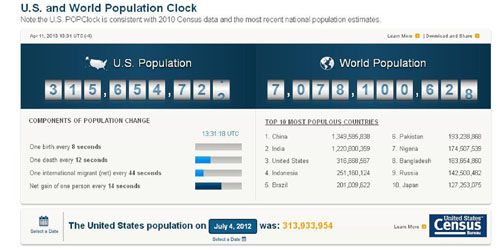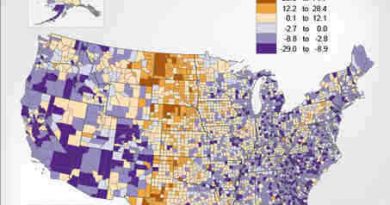Population Clock to Show the World Population
The U.S. Census Bureau released Thursday an updated version of the population clock, one of the most widely visited features on the census.gov website.
The enhanced clock provides the public with a quick and interactive overview of the population in the United States and the world. This release coincides with the beginning of the Population Association of America’s annual meeting in New Orleans.
“The introduction of the updated ‘pop clock’ will further broaden the public’s appreciation for and grasp of population statistics,” said Victoria Velkoff, the assistant division chief in charge of estimates and projections in the Census Bureau’s Population Division.
The population clock displays continuously updated projections of the total U.S. population, including the rate of births, deaths and net migration for the United States. For the first time, the clock also provides an age and sex population pyramid and a graph showing the population of U.S. regions.
Both new features allow users to see how these measures have changed over time. Additionally, users can interact with tables displaying the most populous states, cities and counties in the United States.
The clock provides not only a continuously updated world population total but also a list of the 10 most populous countries, with easy access to more world population statistics.
The clock is based on a series of short-term projections for the resident population of the United States. This includes people whose usual residence is in the 50 states and the District of Columbia.
These projections do not include members of the armed forces stationed overseas, their dependents, or other U.S. citizens residing outside the United States.
The “Country Ranking” tool provides a quick and easy method to view the most populous countries in the world for any given year. The data for this tool are drawn from the Census Bureau’s International Data Base, which offers a variety of demographic indicators for countries and areas of the world with a population of 5,000 or more.






